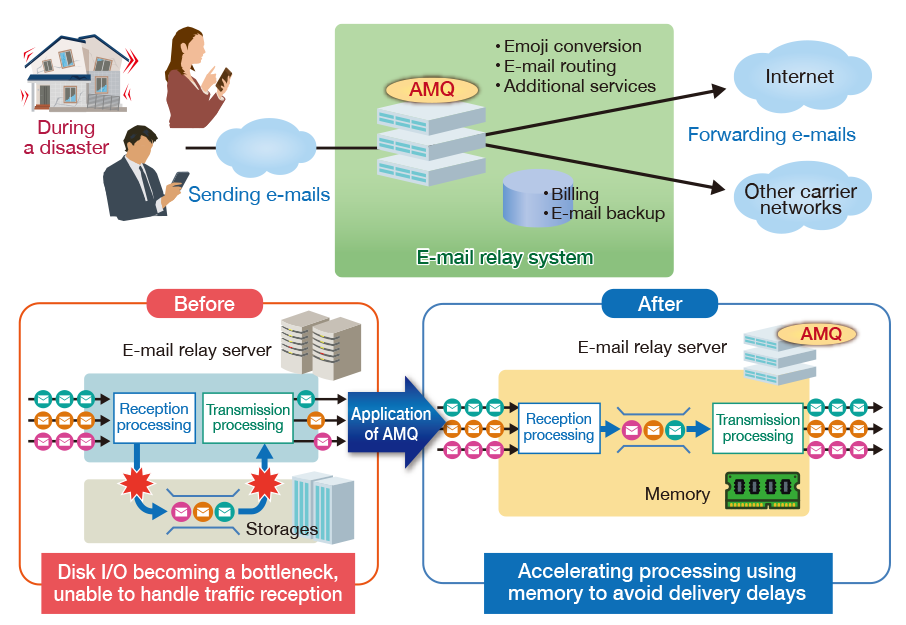For carriers and businesses that utilize telecommunications
Uses in-memory data grid technology to achieve distributed management of in-memory queues across multiple servers and distribute bursty traffic evenly.
Advanced Message Queue (AMQ) utilizes in-memory data grid technology (*1) to serve as a receiver for big data.
By distributing and managing in-memory queues across multiple servers, AMQ achieves the smoothing of bursty traffic and enables uninterrupted, high-speed processing of large volumes of data.
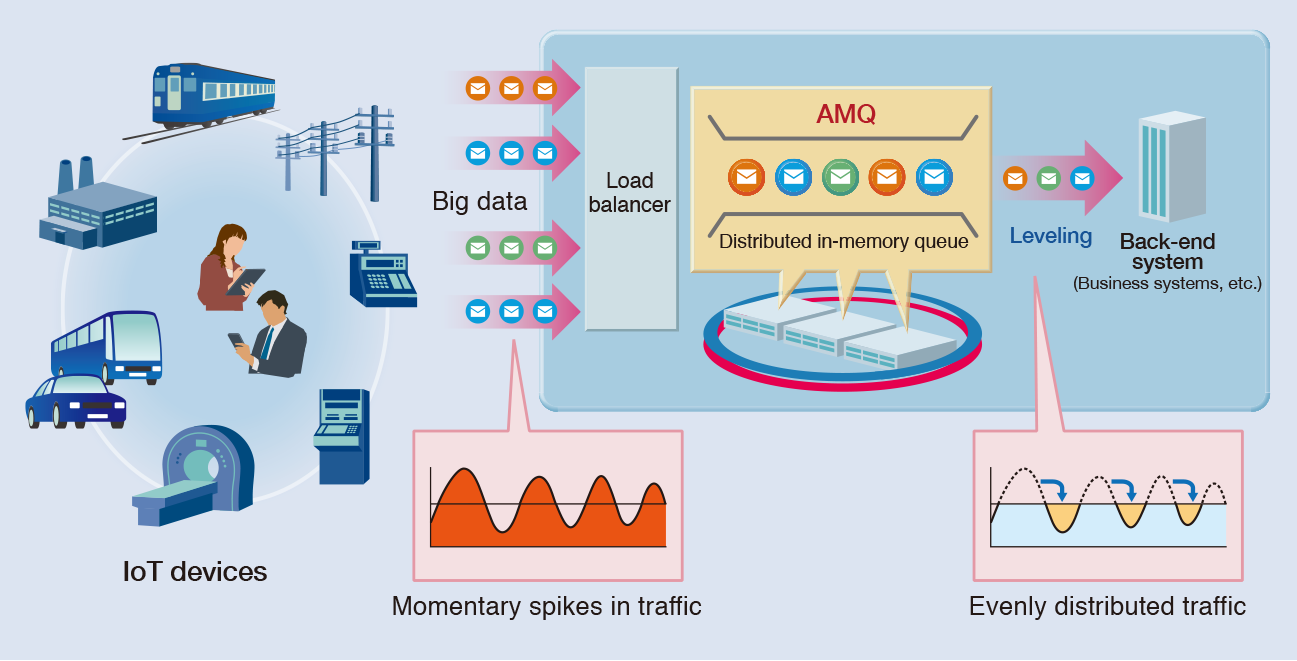
With AMQ, you can send messages to a back-end system and process them preferentially, according to the priority of the message.
It also distributes the load evenly on the back-end system by receiving a flow of traffic with momentary spikes, and sends it to the back-end system in volumes that the system can handle. This allows you to optimize the scale of equipment for your back-end system for average traffic instead of peak traffic.
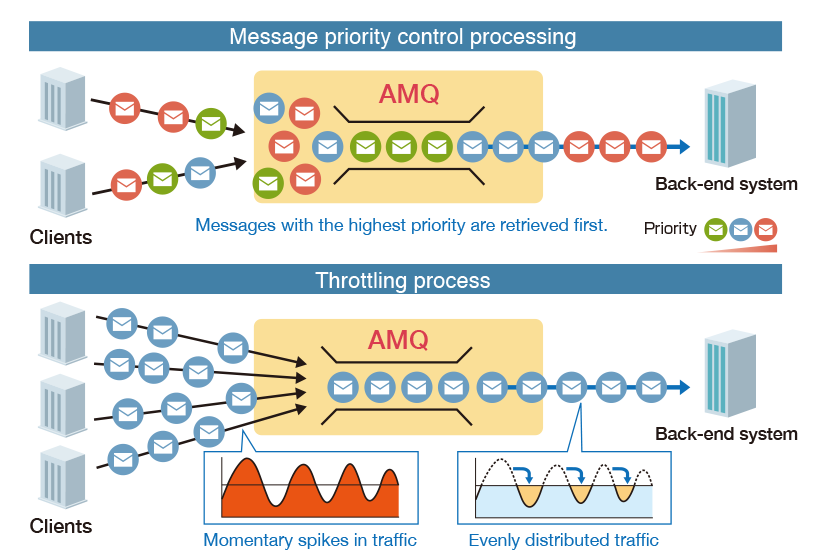
Data is distributed and stored across multiple servers, all of which operate as active systems.
As the same data can be replicated across servers, the service can continue even if some servers become inactive.
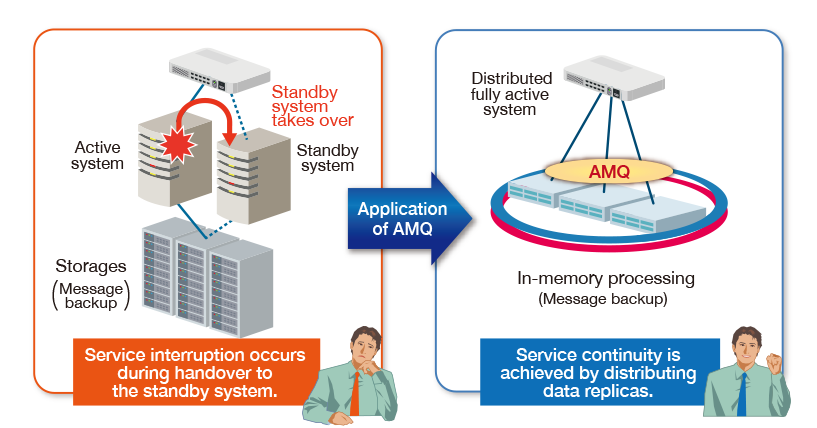
Rather than storing received messages in storage, they are held in the server's memory, allowing for faster processing of large volumes of messages.
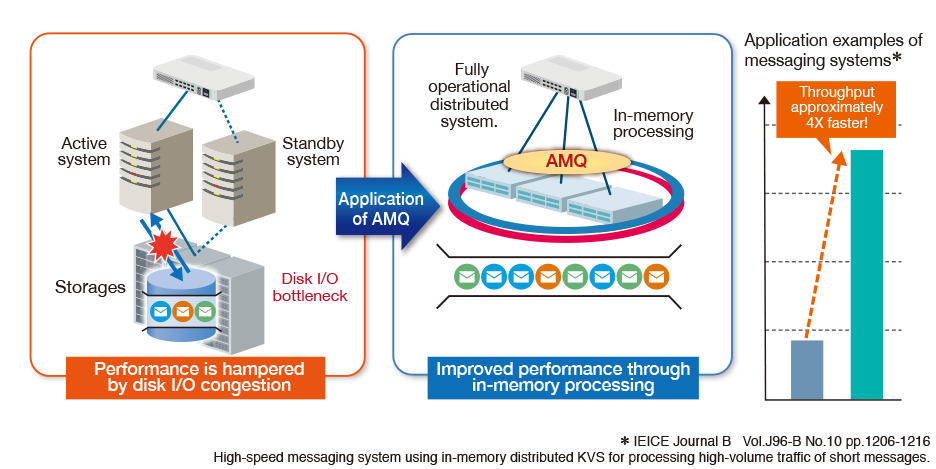
Smart meter operations management system is required to receive data from millions of smart meters installed in households and businesses every 30 minutes, calculate the power consumption, and send the power consumption data to the business server within a specified time frame.
This system has heavy traffic bias and requires additional infrastructure to handle peak traffic. AMQ-based system can distribute concentrated traffic evenly and process large amounts of data in an appropriate scale of infrastructure.
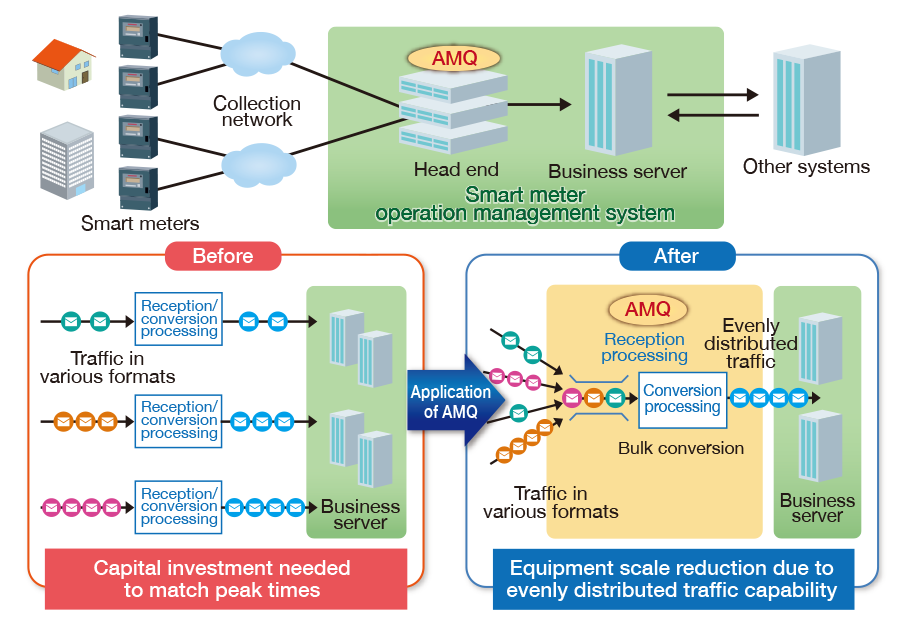
In an e-mail relay system, if many users send e-mails at the same time—such as during a disaster, for example—then e-mails will be concentrated at the mail server, causing delays in e-mail delivery.
An AMQ-based system configuration can distribute e-mail traffic evenly and enable high-speed in-memory processing, making it possible to create a system that minimizes delivery delays.
